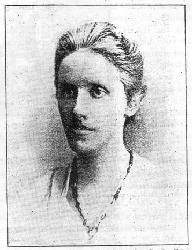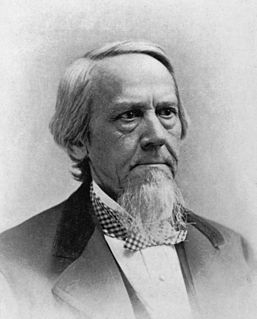
Sunspots are temporary phenomena on the Sun's photosphere that appear as spots darker than the surrounding areas. They are regions of reduced surface temperature caused by concentrations of magnetic flux that inhibit convection. Sunspots appear within active regions, usually in pairs of opposite magnetic polarity. Their number varies according to the approximately 11-year solar cycle.

The Maunder Minimum, also known as the "prolonged sunspot minimum", was a period around 1645 to 1715 during which sunspots became exceedingly rare. During a 28-year period (1672–1699) within the minimum, observations revealed fewer than 50 sunspots. This contrasts with the typical 40,000–50,000 sunspots seen in modern times over a similar timespan.

An aurora, also known as the polar lights or aurora polaris, is a natural light display in Earth's sky, predominantly seen in high-latitude regions. Auroras display dynamic patterns of brilliant lights that appear as curtains, rays, spirals or dynamic flickers covering the entire sky.

Space weather is a branch of space physics and aeronomy, or heliophysics, concerned with the time varying conditions within the Solar System, including the solar wind, emphasizing the space surrounding the Earth, including conditions in the magnetosphere, ionosphere, thermosphere, and exosphere. Space weather is distinct from but conceptually related to the terrestrial weather of the atmosphere of Earth. The term space weather was first used in the 1950s and came into common usage in the 1990s.

A geomagnetic storm, also known as a magnetic storm, is a temporary disturbance of the Earth's magnetosphere caused by a solar wind shock wave and/or cloud of magnetic field that interacts with the Earth's magnetic field.

Edward Walter Maunder was an English astronomer. His study of sunspots and the solar magnetic cycle led to his identification of the period from 1645 to 1715 that is now known as the Maunder Minimum.
A solar storm is a disturbance on the Sun, which can emanate outward across the heliosphere, affecting the entire Solar System, including Earth and its magnetosphere, and is the cause of space weather in the short-term with long-term patterns comprising space climate.
The following is a chronology of discoveries concerning the magnetosphere.

Annie Scott Dill Maunder was an Irish-British astronomer, who recorded the first evidence of the movement of sunspot emergence from the poles toward the equator over the sun's 11-year cycle. She was one of the leading astronomers of her time, but because of her gender, her contribution was often underplayed at the time. In 1916 she was elected to the Royal Astronomical Society, 21 years after being refused membership because of her gender.

Elias Loomis was an American mathematician.

Solar Cycle 24 is the most recently completed solar cycle, the 24th since 1755, when extensive recording of solar sunspot activity began. It began in December 2008 with a smoothed minimum sunspot number of 2.2, and ended in December 2019. Activity was minimal until early 2010. It reached its maximum in April 2014 with a 23 months smoothed sunspot number of 81.8. This maximum value was substantially lower than other recent solar cycles, down to a level which had not been seen since cycles 12 to 15 (1878-1923).

The Carrington Event was a powerful geomagnetic storm on 1–2 September 1859, during solar cycle 10 (1855–1867). A solar coronal mass ejection (CME) hit Earth's magnetosphere and induced the largest geomagnetic storm on record. The associated "white light flare" in the solar photosphere was observed and recorded by British astronomers Richard Carrington and Richard Hodgson. The storm created strong auroral displays and caused serious damage to telegraph systems. The now-standard unique IAU identifier for this flare is SOL1859-09-01.

A substorm, sometimes referred to as a magnetospheric substorm or an auroral substorm, is a brief disturbance in the Earth's magnetosphere that causes energy to be released from the "tail" of the magnetosphere and injected into the high latitude ionosphere. Visually, a substorm is seen as a sudden brightening and increased movement of auroral arcs. Substorms were first described in qualitative terms by Kristian Birkeland which he called polar elementary storms. Sydney Chapman used the term substorm about 1960 which is now the standard term. The morphology of aurora during a substorm was first described by Syun-Ichi Akasofu in 1964 using data collected during the International Geophysical Year.

The three-day May 1921 geomagnetic storm, also known as the New York Railroad Storm, was caused by the impact of an extraordinarily powerful coronal mass ejection on Earth's magnetosphere. It occurred on 13–15 May as part of solar cycle 15, and was the most intense geomagnetic storm of the 20th century.

Solar cycle 25 is the current solar cycle pattern of sunspot activity. It began in December 2019, with a smoothed minimum sunspot number of 1.8. It is expected to continue until about 2030.
Solar observation is the scientific endeavor of studying the Sun and its behavior and relation to the Earth and the remainder of the Solar System. Deliberate solar observation began thousands of years ago. That initial era of direct observation gave way to telescopes in the 1600s followed by satellites in the twentieth century.

Solar phenomena are the natural phenomena occurring within the magnetically heated outer atmospheres in the Sun. These phenomena take many forms, including solar wind, radio wave flux, energy bursts such as solar flares, coronal mass ejection or solar eruptions, coronal heating and sunspots.

The 25–26 January 1938 geomagnetic storm was a massive solar storm which occurred 16–26 January with peak activity on 22, 25, and 26 January and was part of the 17th solar cycle. The electrification of Europe and North America was still in its infancy, therefore the light storm could be seen brilliantly. The intensely bright arches of crimson light with shifting spectrum of green, blue-white, and red radiated from a brilliant Auroral Crown near the Zenith instead of appearing as usual in parallel lines. This Aurora is believed by many people, especially those of the Catholic faith, to be related to the Fátima Prophecies.

A space hurricane is a huge, funnel-like, spiral geomagnetic storm that occurs above the polar Ionosphere of Earth, during extremely quiet conditions. They are related to the aurora borealis phenomenon, as the electron precipitation from the storm's funnel produces gigantic, cyclone-shaped auroras. Scientists believe that they occur in the polar regions of planets with magnetic fields.















